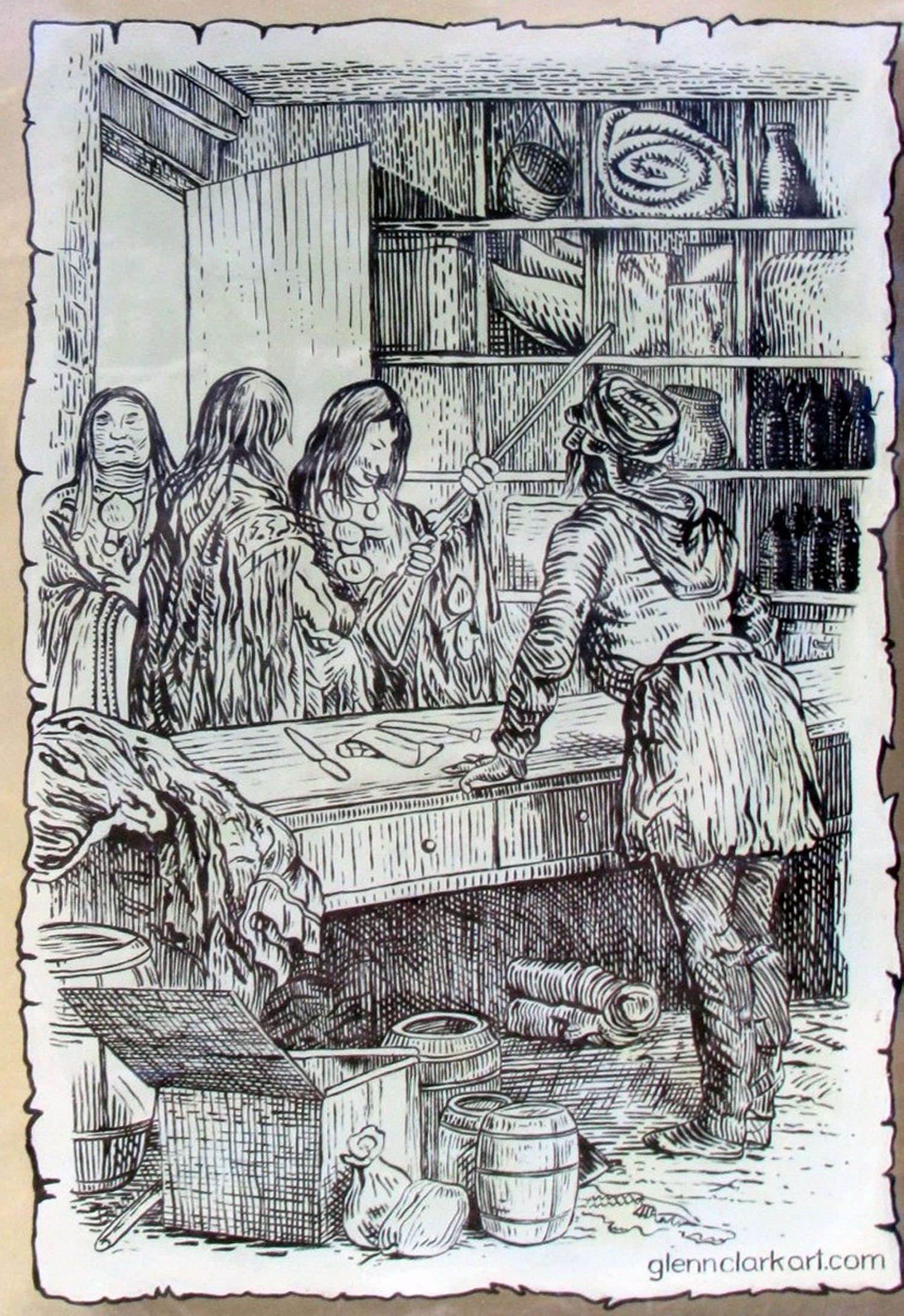The area, later known as Fairview, began as a small claim in 1887. By 1919, Fairview had become a ghost town. Little remains, the site of the Presbyterian Church, constructed at Fairview in 1899 was moved to Okanagan Falls and is affectionately known as the Blasted Church. The Fairview jail, the last remnants of Fairview was moved to the Oliver Museum in 1981. I have yet to find the old cemetery, though no headstones remain, the small iron fencing that surrounded children's graves is still there. The Okanagan Historical Society installed a pedestal with a commemorative plaque at the cemetery, that is my understanding.

Fur Brigade
Initially, First Nations people did almost all the trapping and the furs were transported by horseback, often times using established trade routes and overland trails, or by boat on the rivers. They delivered the furs to trading posts to exchange them for goods and supplies, such as; guns, cloth, tools and other manufactured goods from Europe.
By 1821 what is now British Columbia was the exclusive trading region for the British Hudson's Bay Company.
The Okanagan Valley was a main corridor for Hudson's Bay Company (HBC) Fur Brigades which tapped the rich resources of New Caledonia (as British Columbia was first known) and the Far North.
Furs from the northern HBC forts of St. John, St. James and St. George, Alexandria, McLeod and Kamloops were transported to Forts Astoria and Vancouver, established at the mouth of the Columbia River, in Oregon Territory, from whence the cargoes were shipped to European countries.

Fur Brigade
In 1811, a fur trading post, Fort Okanogan, was built at the confluence of the Okanagan and Columbia rivers, in what later became Washington State. Horses and canoes were used on the 1,000-mile HBC trail and sometimes as many as 200 horses, each carrying two 85 lb. bales of fur and travelling 15 to 18 miles a day, left Kamloops for the south.
In 1827, Fort Langley was established as an HBC trading post on the Fraser river and, in 1846, when the Oregon Treaty declared the 49th Parallel to be the boundary between American and British North America. HBC abandoned its trading posts south of the border. The last "outfit" travelled the Okanagan route the following year.

Hello Good Friends
KLAHOWYA KLOSHE TILLICUMS (in the Chinook language it means, HELLO GOOD FRIENDS).
The many different cultures, in the early days, used the Chinook language to communicate. It had a vocabulary of about 300 words taken from several different languages.
It was spoken slowly and loudly with a great flourish of explanatory hand and facial expressions.